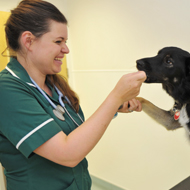Amylase concentration linked to mortality in guinea pigs
Researchers say the digestive enzyme is often overlooked.
Researchers have revealed the clinical significance of plasma amylase to the lifespan of guinea pigs.
The new study has found that guinea pigs which recorded particularly high plasma concentrations of amylase were more likely to die within 30 days of biochemistry analysis.
To investigate the causes of mortality in guinea pigs, researchers retrospectively analysed the medical records of 278 guinea pigs treated in four different institutions. The guinea pigs had all undergone a biochemistry panel, had their plasma concentrations measured and had a follow-up 30 days later.
The guinea pigs had been brought to the institutions for a number of reasons, including emergencies, sickness and wellness appointments. Among their diagnoses were integument disease, reproductive issues and gastrointestinal disease.
Using this data, the research team analysed the guinea pigs’ survival rates and drew comparisons to their amylase concentrations.
The analysis revealed that guinea pigs which recorded an elevated level of plasma amylase concentration (1910 to 3985 U/L) were seven times more likely to die in the next 30 days than those with a concentration within the reference intervals (1339 to 1573 U/L).
It also found increased mortality risk among guinea pigs with high blood urea nitrogen (BUN) concentrations. Guinea pigs with BUN concentrations higher 62 mg/dL had a 30 times increase in their mortality risk.
Ashley Souza and Sarah Ozawa, lead authors of the study, said: “Guinea pigs can be a challenging species to treat, especially when they enter a veterinary hospital in critical condition.
“It is our hope that this study provides further diagnostic tools for veterinarians to use when explaining options and prognosis to an owner, helping guide treatment and care for this species.”
Amylase is a digestive enzyme, which researchers say is often overlooked. Its clinical significance is largely misunderstood, however researchers now say that high amylase levels could indicate a sick guinea pig requires more diagnostic testing or supportive care.
The researchers say that, because the prognostic capacity of amylase is limited, the amylase concentration data should only be used as part of the bigger clinical picture and should not solely inform veterinary decisions.
The full study can be found in the Journal of Small Animal Practice.
Image © Shutterstock



 Zoetis is to present a CPD event for free to members of the British Veterinary Nursing Association (BVNA).
Zoetis is to present a CPD event for free to members of the British Veterinary Nursing Association (BVNA).